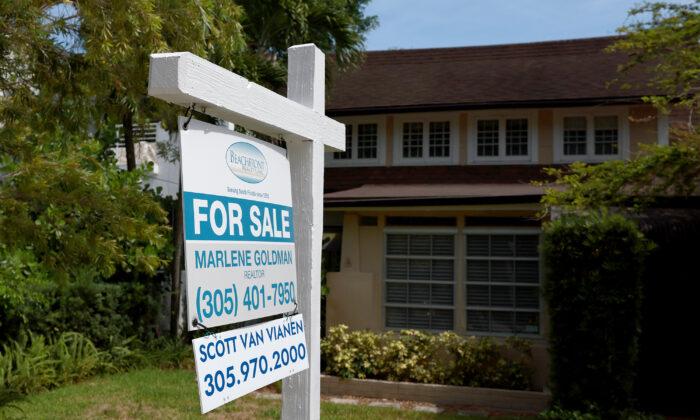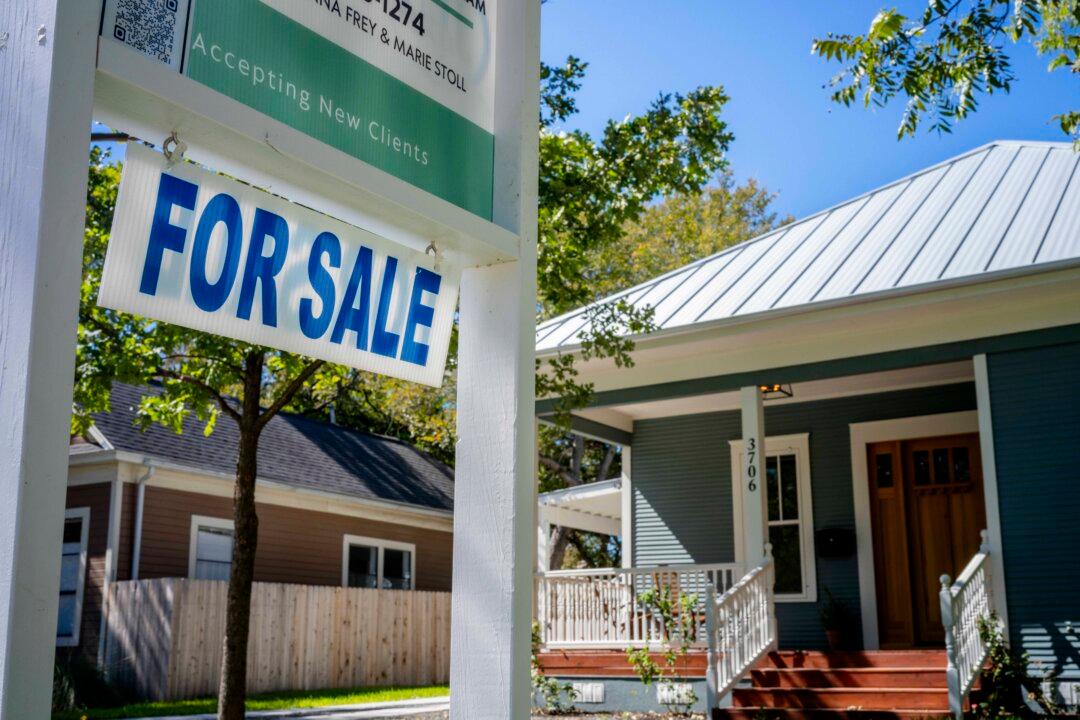Headlines across the nation continue to trumpet the recent slump in the mortgage industry, as thousands of loan professionals now find themselves furloughed for the time being.
Industry giants such as JPMorgan Chase and Loan Depot are planning to slash thousands of jobs, while published reports indicate layoffs have been in the hundreds at Wells Fargo, USAA Federal Savings Bank, and First Guaranty Mortgage Corp. among many others. Better.com, a digital lender based in New York, has already let go more than half of its staff.
So how does this alleged collapse of the mortgage industry affect potential homebuyers, as well as other banks and mortgage firms? Linda McCoy, president of the National Association of Mortgage Bankers (NAMB), told The Epoch Times that the industry will survive and that those who want to buy a home won’t be in jeopardy of having to search profusely for a loan.
“Basically, we had so much volume coming in over the past two years that the industry just couldn’t handle it, and as a result, had to hire lots of people,” she said.
McCoy, who owns Mortgage Team1, Inc. in Mobile, Alabama, recalled those days when they “just couldn’t stop working.”
“We were all so busy taking care of huge amounts of people, and when things began to slow down, some companies naturally had to lay off those extra employees,” she said.
Founded in 1973, the NAMB serves as the voice of the mortgage industry and includes small business owners, loan originators, account executives, and related professionals. With almost 30 years in the business, McCoy said she has never seen anything like the buying frenzy over the past two years.
“It was definitely an anomaly,” she said. “COVID helped to create the need for more housing, as people yearned for more space and just kept buying. Even before April of this year, we still couldn’t answer all of the phone calls.”
Another reason for the recent wave of layoffs can be attributed to the decline in refinancing, McCoy noted. Firms that specialized in refinance were hit especially hard when mortgage rates started to climb.
She is forecasting that the mortgage industry, along with the real estate market, will start to return to normal by the end of this year and the beginning of 2023. She also believes that potential homebuyers may be presented with more choices, fewer bidding wars, and perhaps even lower prices.
“There’s going to be a natural slowdown, and we’ll all have to get back to the basics and do some hard work,” McCoy said. “We can’t be just ‘order takers’ anymore.”
For those who did lose their jobs recently, she predicts that many of the administrative personnel will look to other industries, while underwriters and loan officers may consider career changes.
“Just like back in 2008 when the real estate market crashed, many loan officers and real estate professionals changed jobs,” McCoy said.

‘Ready to Hire’
Motto Mortgage Home Services, a locally owned and operated lender in the Chicago suburb of Oakbrook Terrace, is still standing strong. The firm, owned by husband-and-wife team Kelly Jackson and Davina Arceneaux, is part of Motto Mortgage’s nationwide network of more than 150 independently-owned offices in 40 states.With a current total of seven people, Motto is actually planning to hire three more employees.
“We started the business in July 2020 in the height of the refinance boom, but we decided to focus on purchase business, so we really aren’t affected by the recent slowdown,” Arceneaux told The Epoch Times.
In fact, it was difficult for them to find quality people during the buying rush over the past two years, she said. Because potential candidates were so busy doing so many deals, she and her team struggled to keep up with the volume.
“Being owners, we had to put on our loan officer hats just to maintain the pace,” Arceneaux said. “Now, we’re in the opposite situation from a lot of other lenders because we’re ready to hire.”
She said they’re now finding a lot of great candidates who are available, and they want to invest in quality people now so that they’ll be ready when the market picks up again. One of their most recently offered positions—a loan officer assistant—was filled by someone with 20 years of experience who had recently been laid off from another lender.
“This has been a real blessing for us,” Arceneaux said.
Typically, they handle loans averaging $250,000 to $300,000, with the occasional loan of $100,000 to $200,000 and some of up to $1 million. Condo loans are heavier in Chicago itself, while single-family home loans tend to dominate the suburbs.
“We’ve also increased our efforts to educate our clients and real estate professionals about all of the loan products out there,” Arceneaux said.
This now includes adjustable rate mortgages (ARM), Federal Housing Administration loans, and paying down the mortgage rate with points—fees paid to a lender for a reduced interest rate.
“I don’t think we’ll be going back to 3 percent rates any time soon, but I do think we’ll see a balancing out by the end of the year,” she said.
McCoy is also predicting a stabilizing of rates in the high 5 percent or low 6 percent range through the end of the year and the first quarter of 2023.
Risk for Salespeople
Ron Kirse is the Seattle district manager for U.S. Bank Home Mortgage, which lends in all 50 states and has offices in 26 states.“We’ve had no layoffs on my team, but in general, the operational side of banks and lenders has faced some layoffs basically because the refinance volume is gone,” he told The Epoch Times.
Kirse’s team has worked together for many years and has concentrated mainly on purchases.
“We’re not at risk now, but salespeople can become at risk over time if they are not producing,” he said.
Overall, the mortgage industry experienced the fastest rate increase in 22 years from just January to April, Kirse noted.
“Last year, our West Coast divisions closed $4.5 billion in loans, and of that amount, $2.4 billion was in refinancing,” he said. “With the higher rates now, no one wants to refinance.”
Like many other industries, lending can be cyclical, with relatively lower mortgage interest rates in place over the past 10 years.
“Home prices have been going up at exorbitant rates, but now that mortgage rates are increasing, I think you’re going to start to see home prices come back to normal,” Kirse said. “We’ve also seen a 40 percent increase in ARMs.”
His top producers are still running with about 70–80 percent on home purchases, as opposed to refinancing.
“The people struggling now are the ones who depended too much on the refinance business,” Kirse said. “They didn’t keep their fingers enough into the purchase side.”
While new home construction is lagging a bit, he doesn’t see that as any indication of a recession on the horizon.
Arceneaux agrees.
“There’s been a lot of talk about a recession coming, but at the end of the day, if people are keeping their jobs, they can pay their mortgages, and I don’t see the mortgage industry being affected,” she said.





